Sponsored content can give industry players a huge advantage. It's more targeted, so only people who are interested in the product see the ad. As a result, companies can increase brand awareness and revenue, which gives them an edge.
In some industries, brands combine influencer marketing with paid social media posts due to fierce competition, and there is one social media platform where sponsored posts are used extensively. With this strategy, paid ads ensure wide reach and exposure, while influencers give credibility and trust in the brand's direction.
In this blog post, we'll explore the top five industries that use sponsored posts on Instagram and take full advantage of this marketing strategy’s benefits.
Why Are Industries Using Sponsored Posts on Instagram?
Diverse and enormous user base: As of 2023, the number of active users on Instagram is over 1.35 billion. The platform is the top choice among 25-34-year-olds, followed by 18-24-year-olds and 35-44-year-olds. Its massive and eclectic user base makes it a great fit for branded ads in most industries.
Mobile-friendly: Desktop usage has been on the decline, while mobile usage is over 55% worldwide. As a mobile-first platform, Instagram has features like notifications, camera access, etc. that make the user experience even better.
Global: Businesses can target and reach users in multiple countries and regions with Instagram. India, the USA, and Brazil are the top three countries using the app.
Adaptable: Market trends and customer preferences change at a brisk pace. Social platforms like Instagram are pioneers in adapting to new trends and customer habits. Instagram lets companies keep users interested with a wide range of content while staying competitive.
Content diverseness: Throughout the years, the channel has released a variety of content formats to appeal to its users. Businesses will most certainly find a content type that engages their target audience and meets their marketing goals, including photo and video posts, Reels, Stories, and IGTV.
Visuality: For industries like fashion, beauty, travel, accessories, and food and beverages, where visuals are a big part of marketing and product showcasing, Instagram is the best tool.
Interactive: There are tons of ways brands can engage with their customers, such as live streaming, shoppable posts, quizzes, and surveys. While users can like, share, and comment on interesting content, and communicate with businesses and creators more directly.
Authenticity: Products and services endorsed by influencers are perceived as more authentic than conventional brand commercials. Users know many creators make money from ads, but it's more trustworthy and credible when they know an influencer is paid to promote a product and honestly reviews it. In addition, brands need to partner with creators who have meaningful dialogue with their fans.
Community building: Social platforms allow brands to target different audience segments with relevant content. Through this, they can build a community of people with similar tastes and interests and engage them regularly.
Streamlined workflow with tools: There are many tools available for managing global campaigns, and most of them can be integrated with the largest platforms. Industries using sponsored tools can save significant time by scheduling posts and managing partnerships for influencing.
Top 5 Industries Leveraging Influencers on Instagram
When it comes to visuals and trends the next five industries stand out: beauty, fashion, accessories & jewelry, fitness & gym and retail. Companies from this sector heavily rely on imagery and since new consumer groups have emerged they must provide social proof to convince them and this is where influencers come in handy. With Instagram's variety of content and influencers' credibility, brands can provide their target audiences with a customized experience.
A number of well-known fashion, sports, and beauty companies have come under fire for not serving the needs of certain groups of consumers. In response to this emerging brands have incorporated divergent viewpoints, relevant industry experts, and marginalized audience members into their marketing plans. Nowadays, most prestigious brands have jumped into influencer marketing and work with a diverse creator portfolio from micro- to mega-influencers. Now let’s see brand sponsorship examples of these five industries.
Beauty
Key statistics related to the beauty market (source: Exploding Topics):
Last year the industry grossed over $90 billion in revenue and is projected to generate over $100 billion this year.
L’Oréal is the biggest brand out there. Its sales surpassed $35 billion.
Skincare takes up 42% of the entire beauty market, more than hair care and makeup combined.
Estimates say cosmetic brands spent $7.7 billion on advertising in 2022, with digital marketing making up 34.1%.
Companies in the beauty sector prefer Instagram, YouTube, and Facebook. When it comes to engagement rates, TikTok takes the cake.
Although well-established and reputable businesses still spend a lot on traditional advertising, beauty companies are also spending more on digital ads, including influencer marketing. There have also been a number of new brands popping up in the last 15-10 years that have worked with content creators on online platforms rather than offline advertising sites to meet the consumption habits and product needs of the younger generation.
 Examples of sponsored content by Maybelline. The brand is working with a lot of mid-tier content creators who have 200-300K followers. Makeup influencers usually share their honest thoughts on samples or test out new collections.
Examples of sponsored content by Maybelline. The brand is working with a lot of mid-tier content creators who have 200-300K followers. Makeup influencers usually share their honest thoughts on samples or test out new collections.
 L’Oréal Pro recently teamed up with macro- and mega-influencers in India to promote its ammonia-free hair color product line, called iNOA. Part of the campaign was that influencers shared before and after photos of themselves.
L’Oréal Pro recently teamed up with macro- and mega-influencers in India to promote its ammonia-free hair color product line, called iNOA. Part of the campaign was that influencers shared before and after photos of themselves.
 Traveling and evening skincare routines presented by two mid-tier influencers. To cater to users of all skin types and looks, Ulta Beauty works with a diverse influencer roster. Since 2020 the brand has been choosing 25 content creators annually and has included them in its campaigns.
Traveling and evening skincare routines presented by two mid-tier influencers. To cater to users of all skin types and looks, Ulta Beauty works with a diverse influencer roster. Since 2020 the brand has been choosing 25 content creators annually and has included them in its campaigns.
Clothing & Fashion
Fashion is about expressing yourself, which is why marketing campaigns today emphasize personalization and inclusivity. Through social media influencers and sponsored posts clothing brands reach potential customers who have been left out of traditional advertising because of their body shape or taste.
Key statistics related to the fashion market:
The fashion industry will exceed a revenue of $1.7 trillion by the end of 2023.
With $84.80 billion in revenue, LVMH is the top fashion company, followed by Christian Dior Group and Nike.
The fast fashion industry makes up approximately 18% of the global fashion market. This growth is fueled by a new consumer group’s demand for affordable clothing. However, the biggest fast fashion brands like Zara, Shein, and H&M are the largest carbon emitters in the world.
 Brand sponsorship examples: Zalando’s paid partnerships with a non-binary creator and a fashion influencer who promotes body positivity.
Brand sponsorship examples: Zalando’s paid partnerships with a non-binary creator and a fashion influencer who promotes body positivity.
 In addition to working with celebrities, Calvin Klein collaborates with influencers with less than 100K followers.
In addition to working with celebrities, Calvin Klein collaborates with influencers with less than 100K followers.
Accessories & Jewelry
Sunglasses and bags are designed to appear in visually pleasing sponsored Instagram posts, which explains why the jewelry and fashion industries leverage paid social media. Content like this can be used to highlight the quality and elaborate details of items and provide inspiration for audiences on how to style their outfit.
Key statistics about the jewelry industry:
Globally, the jewelry market is valued at $340.7 billion.
33.7% of all jewelry purchases are rings.
The top three jewel brands are Tiffany & Co., Pandora, and Chow Tai Fook.
 Jennifer Lopez is the global ambassador for Coach, but the company also works with influencers of lower tiers. Coach bags aren't as expensive as high-end luxury items, but since they are trendy and made with high-quality materials, they make great accessories for consumers who want stylish yet affordable options.
Jennifer Lopez is the global ambassador for Coach, but the company also works with influencers of lower tiers. Coach bags aren't as expensive as high-end luxury items, but since they are trendy and made with high-quality materials, they make great accessories for consumers who want stylish yet affordable options.
Fitness & Gym
In the world of sports, there is no side talk. Clothing and shoes used in sports are subjected to intensive use. Businesses in this industry realized that fitness influencers' and athletes' names and words are proof of quality. Rather than working with celebrities who charge huge sums for endorsements, fitness brands are increasingly working with creators who have a few hundred thousand followers and are more relatable.
Key statistics about the fitness and sports market:
Sports apparel is valued at $260.75 billion.
Market leaders are Nike, Inc. Adidas AG, and Puma SE.
The USA is the largest buyer of activewear.
Women account for almost 60% of sportswear purchases.
43% of Generation Z and 38% of Millennials consider investing in their well-being to be a good investment.
 Since Gymshark's launch, it has heavily relied on influencer posts in its marketing strategy. Its content is centered around fitness and gym workouts.
Since Gymshark's launch, it has heavily relied on influencer posts in its marketing strategy. Its content is centered around fitness and gym workouts.
 Along with professional athletes, Nike’s influencer roster includes young lifestyle influencers and even families. The topic of their content varies from back-to-school shopping to casual college wear.
Along with professional athletes, Nike’s influencer roster includes young lifestyle influencers and even families. The topic of their content varies from back-to-school shopping to casual college wear.
 A leading running shoe brand, Asics teams up with both professional and hobby runners. Its account regularly shares photos and videos of athletic championships.
A leading running shoe brand, Asics teams up with both professional and hobby runners. Its account regularly shares photos and videos of athletic championships.
Shopping & Retail
Why would a retail giant like Amazon collaborate with influencers? Having an extensive product line, influencers help the company reach specific audiences and market relevant products more effectively. The creators bring unique and creative ideas to Amazon's marketing campaigns that keep them in the minds of customers. In addition, they help the company become more human.
 Two campaigns raising viewers’ attention to Amazon deals.
Two campaigns raising viewers’ attention to Amazon deals.
Conclusion
Paid advertising and influencer marketing work in tandem to achieve several marketing goals and make their implementation even easier. As well as the five industries listed here, businesses in many other sectors have strengthened their relationships with creators and benefited from paid influencer partnerships. However, a company can collaborate with creators in a number of ways, depending on its marketing goals, niche, and budget. Read our relevant article on influencer campaign types and their benefits and drawbacks to determine which is the best fit for your brand.














